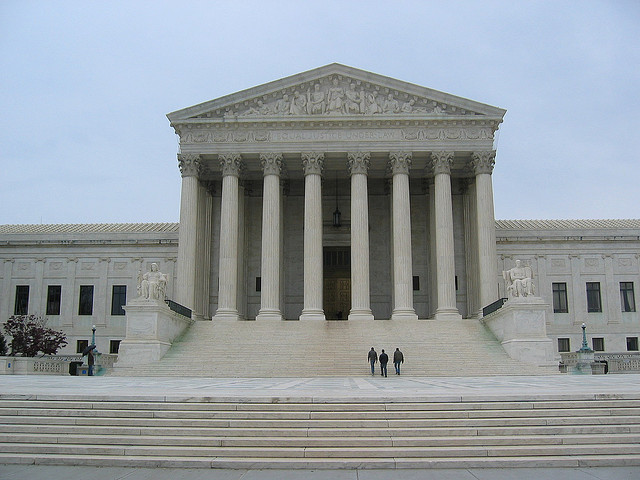What Do the Recent Supreme Court Cases (“Hobby Lobby” and “Harris v Quinn”) Have to Do with the Federal Budget?
By
Doug Hall
Posted:
|
Budget Process,
Health Care,
Social Insurance, Earned Benefits, & Safety Net

Photo: Supreme Court Building, Washington D.C. by AFagan on Flickr
Two significant Supreme Court decisions announced a few weeks ago received considerable attention, for very good reasons. In Burwell v Hobby Lobby (aka “Hobby Lobby”), the Supreme Court pushed the boundaries in the complicated intertwining of corporate “personhood”, religion, reproductive freedom, and the health and well-being of women. And the decision in Harris v Quinn seemed to be just the most recent illustration that unions are under siege in America.
While the public discourse has focused on the social, not the budgetary, repercussions of these decisions, the connection to the federal budget becomes apparent when we scratch a little deeper. In the Hobby Lobby ruling, one budget “takeaway” is that a single-payer public insurance option (“Medicare for All”) would circumvent any restrictions resulting from the Supreme Court’s decision. In the absence of a single payer system, there is still room for the federal government to step in to ensure women have access to whatever forms of birth control they choose, in consultation with their personal physicians. Such a move would likely have a modest but real impact on the federal budget (though comparing that to the costs—both public and private—of denying access to contraception would be challenging at best).
As for the relevance of the Harris v Quinn decision for the federal budget, that connection speaks to the larger matter of income inequality and how it relates to public investments. Here’s how I break it down:
- The American public, by a margin of 2:1, are dissatisfied with the distribution of income and wealth in the United States. (This explains, in part, why a 696 page book written by a French economist, Thomas Piketty, stands at 6th on the New York Times hardcover non-fiction list, a list it has been on for 14 weeks as of July 20).
- The role that unions have historically played in moderating income inequality in America is well documented (my former EPI colleague, Larry Mishel, notes, for example, that “the direct and norm-setting impact of unions shows that deunionization can explain about a third of the entire growth of wage inequality among men and around of the fifth of the growth among women from 1973 to 2007.”)
- As a society, we respond to growing income inequality with a variety of mechanisms: collective bargaining through unions, equitable access to quality and affordable child care, mandated minimum- or living-wages, charitable entities such as food pantries or soup kitchens, and government spending on programs such as SNAP/Food Stamps, free and reduced price school lunches, Head Start, and the like.
- To the extent that we place constraints on, or erode the effectiveness of one mechanism (in the Harris v Quinn case, the bargaining power of unions), a greater burden falls on the remaining mechanisms, just to maintain the current (and already unacceptable) levels of inequality. That, in part, means greater government spending.
We’ll have much more to say on matters of income and wealth inequality, and economic equity more broadly, in the coming months. As Harris v Quinn illustrates, income inequality clearly is a significant federal budget matter. Stay tuned.